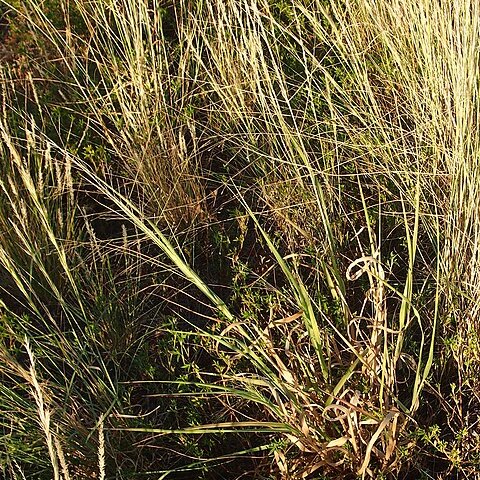Perennial, caespitose. Culms erect, 60–100 cm tall, nodes glabrous. Leaves basal; leaf sheaths striate, glabrous; leaf blades linear, flat, 15–30 × 0.5–0.8 cm, glabrous, tough, base straight, apex tapering to a fine point; ligule ca. 1 mm, a ciliolate membrane. Panicle broadly ovate in outline when fully exserted, terminal, 20–40 cm, much branched; branches rigid, ascending and spreading, scabrid or smooth. Spikelets elliptic, 2–3 mm, glabrous, acuminate; lower glume broadly ovate, 1/5–1/3 length of spikelet, clasping the base of the spikelet, 0–1-veined, obtuse or acute, separated by an internode; upper glume as long as spikelet, 7-veined; lower lemma similar to upper glume, palea poorly developed; upper floret slightly shorter than spikelet, pale yellow, smooth, shiny.
More
A perennial grass plant. It grows up to 30-100 cm tall and spreads 30-80 cm wide. It forms stout tussocks. The stems are hollow and erect. The leaf blades are 15-30 cm long and 1-2 cm wide and flat. They are bluish-green with a white midrib. The seed head is 40 cm long. It spreads out about 40 cm wide. There are only a few spikelets. These are 0.3-0.4 cm long and green to purple. The seeds are dark brown and shiny.

